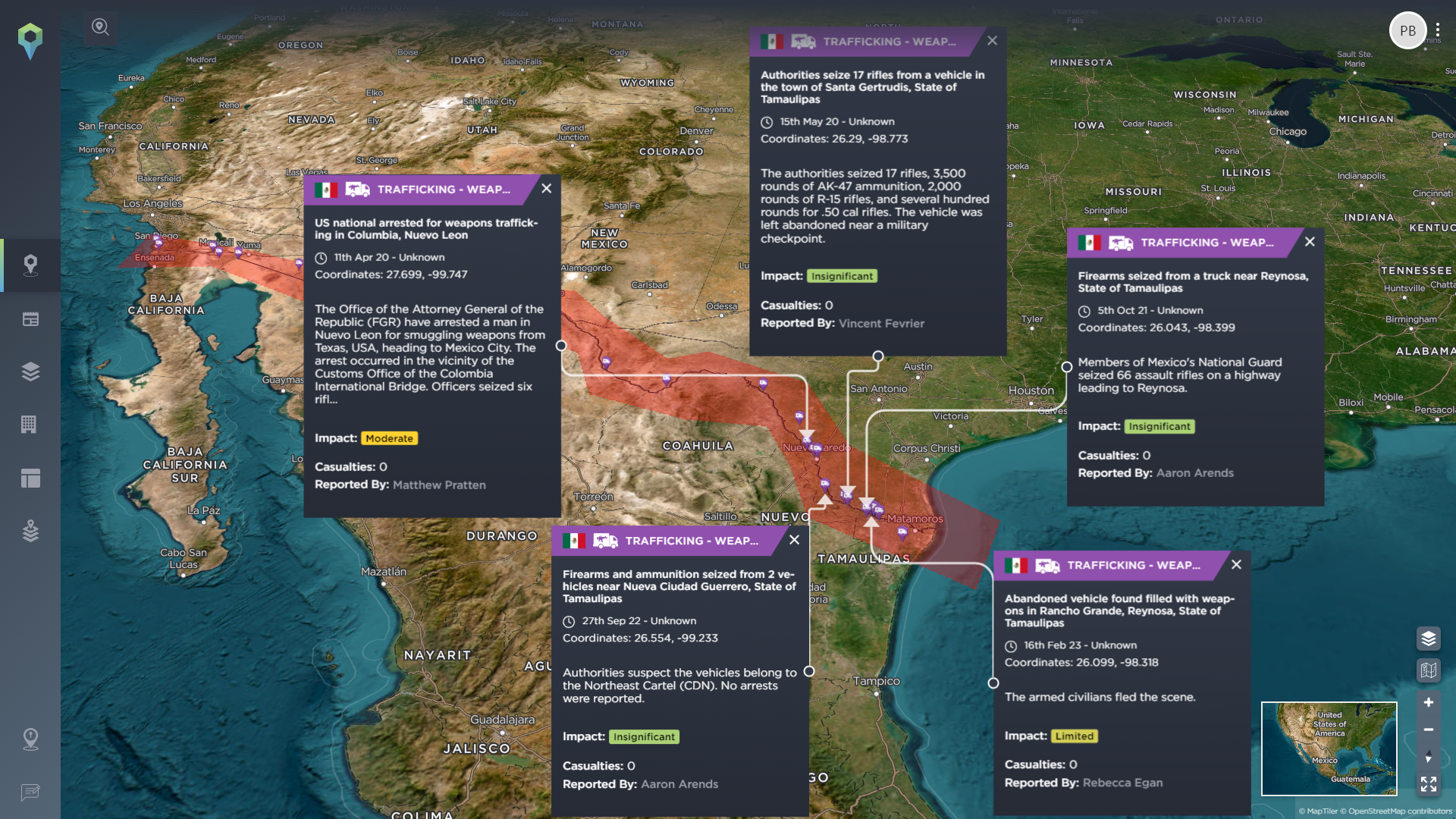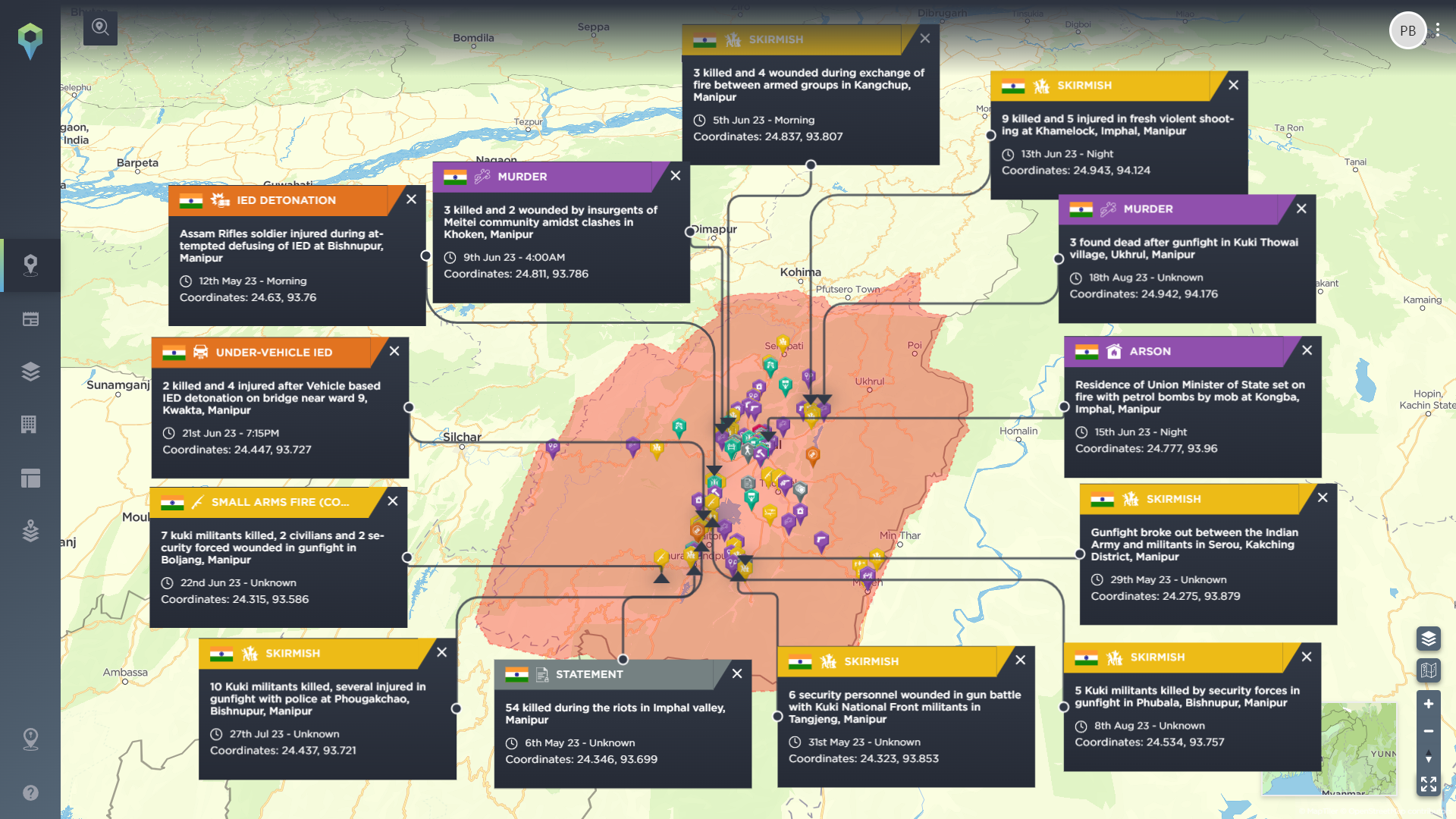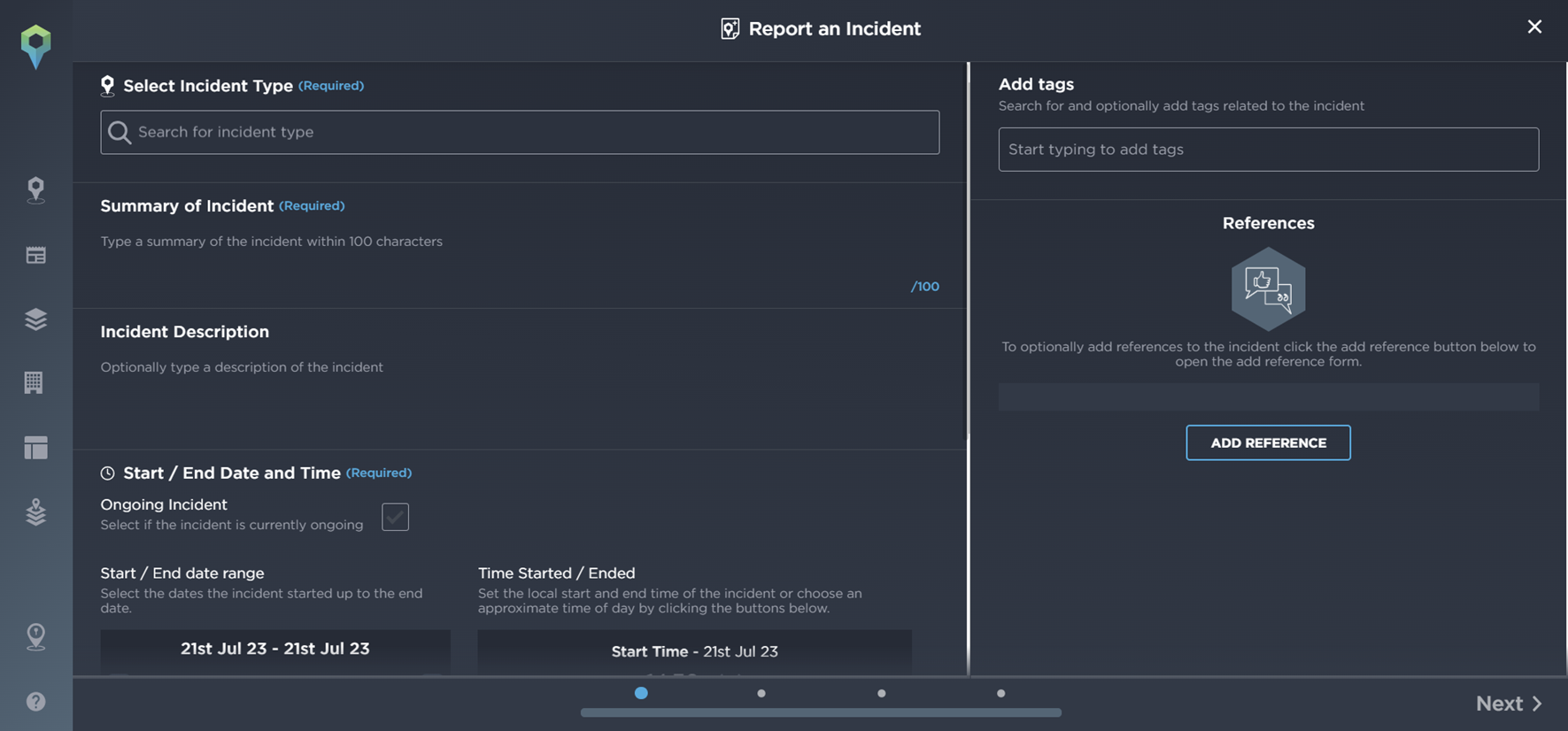Security Challenges at the India-Pakistan Border: How are Chinese drones being used for Arms and Drugs Trafficking?
The growing threat of drone trafficking across the India-Pakistan border - and how Chinese-made drones are assisting in drug and arms smuggling into the country.
Executive Summary
- Chinese-made drones remain an issue of concern as a new aerial threat
- Escalations and successful trafficking of arms and drugs
- Around 100 drones were shot down by Border Security Forces (BSF) in 2023
- The new domain of aerial trafficking across borders created new challenges for the Indian Army
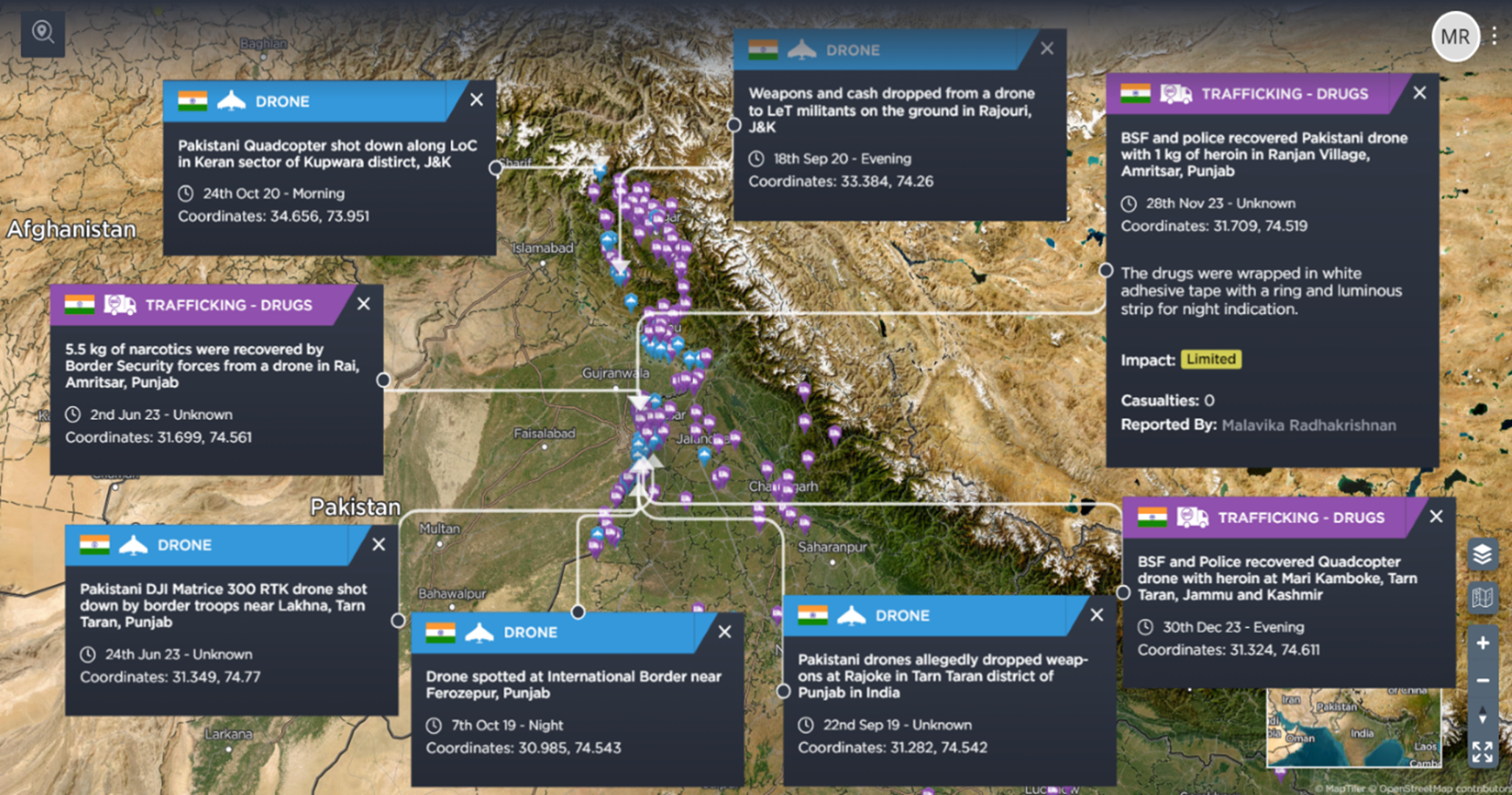
This image shows drone activity along the LoC and International border along Punjab and Jammu and Kashmir [image source: Intelligence Fusion]
The India-Pakistan border, characterized by geopolitical tensions and conflicts, has now become a melting pot for arms and drug trafficking facilitated by drone technology. India has always been a destination and transit hub for heroin and hashish produced in the Golden Crescent (illicit drug production from Central, South, and West Asia, mostly from mountainous areas of Iran, Afghanistan and Pakistan). A Narco-terrorist nexus created between drug traffickers, criminal networks and terrorist organizations through this network has reportedly facilitated and funded various insurgent and terrorist movements within the state.
Since 1983 trafficking of heroin from the Golden Crescent has been mainly through the border states of Punjab, Jammu and Kashmir, Rajasthan and Gujarat. Punjab became the major trafficking route during the 1980s Sikh militancy, with Amristar becoming the center point of heroin trade in the state, due to the routes that existed. Various studies have indicated that the increased trafficking has directly impacted the consumption of drugs and gun violence amongst the youth specifically in states of Punjab and Jammu and Kashmir. The rugged terrain along the international border has presented challenges for traditional surveillance and enforcement measures presenting an attractive route for the traffickers.
For decades, the modes of trafficking of drugs and arms have evolved from camels, carrier pigeons, and human traffickers to underground pipes. The introduction of drones as a mode of trafficking has provided a cost-efficient shift towards unmanned methods of trafficking. Thus, the Guardian quoted that the BSF reports that UAVs (unmanned aerial vehicle) have become the ‘main modus operandi of trafficking drugs’, replacing the traditional methods of trafficking.
The first drone activity for trafficking drugs and arms smuggling was first reported in 2019. Since then, according to records, 77 drone sightings were reported in 2020, 104 in 2021 and 311 in 2022. Out of 492 sightings over the years, around 369 took place in Punjab, 75 in Jammu and Kashmir, 40 in Rajasthan and 8 in Gujarat according to Carnegie India. Thus, the threat due to such infiltrations is high along the Internation Border (IB) rather than the Line of Control (LoC) in Jammu and Kashmir. As this report will highlight, these drones have posed threats towards both political and security establishments in India.
Over the past year, several cross-border infiltrations, ambushes and ceasefire violations have been recorded along the LoC and IB, although recently most of the drone trafficking recoveries were made in Punjab state, particularly in the districts of Amritsar, Gurdaspur, Tarn Taran, and Fazilka. In addition to the violence, the reports have suggested a fourfold increase in the infiltration of drones trafficking drugs, arms, ammunition, and explosives. As per BSF, reports of drone sightings have increased in the last year and currently consist of 60% of drug trafficking in the state in 2023.
Drone infiltrations have offered several advantages over existing methods used by state and non-state actors. The small-sized drones can fly sub-radar, at high altitudes, with low speed and low sound, making them difficult for the security forces to detect or intercept. Chinese drones such as DJI Matrice 300 RTK, DJI Matrix 350 RTK, or DJI Mavic are the most used drones. One analysis of a recovered drone reportedly revealed that the rogue UAV was manufactured allegedly by Da-Jiang Innovations, Shenzhen, China which could fly with payloads of 9 kg weight with a maximum flight time of 31 minutes.
Several drones were shot down by the border security forces while others have been recovered from regular dropping zones which are mostly paddy fields. The drones were found carrying drugs and Chinese-made assault rifles wrapped in white adhesive tape with a ring and luminous strip for night indication. Drugs were usually attached in sacks or bottles of Coca-Cola and have been found around 12 kilometers (about 7.46 mi) inside the border. Lately, consignments with lighter payloads have also been reported.
According to reports of forensic investigation of the chip installed in the Chinese drone, flight data revealed that it was not only operational within Pakistan but had also allegedly traveled over coordinates in Shanghai, China. Such revelations suggest, or raise the threat of, espionage on military and other critical infrastructure in Indian territory. Such ranges of engagements raise suspicions over reports alleging Pakistan’s ISI and Pakistan Rangers’ involvement in setting up six drone centers to aid the crossing of the border and involvement in promoting the drug trade and violence within India. Effectively drones have also been reported transporting money and ammunitions such as magnetic IEDs.
Images show drones recovered by the army along the border [image source: The Weekend Leader; NDTV]
The use of drones in such volatile regions has clearly added a new dimension to the existing security challenges. In addition to these, a consistent movement of drones has allegedly been financing and arming terror outfits like Lashkar-e-Taiba camps in the IB. The Punjab administration has also raised serious concerns about the effect on the youth in Punjab and the adjacent regions due to increasing availability of drugs through trafficking via drug drones.
The Border Security Forces (BSF) and the Punjab state police have been actively involved in various kinetic and non-kinetic countermeasures along the IB, including a Drone Emergency Response System (DERS), which has been installed all along the western border. The Ministry of Home Affairs (MHA) has also established an Anti-Rogue Drone Technology Committee (ARDTC) under the supervision of BSF to evaluate and certify the technology available. The BSF has also conducted several awareness programs to encourage the reporting of suspicious drone activities in the locality. Local community Village Defence Committees (VDCs) have been trained by the army in Jammu and Kashmir to be strongly involved in curbing the smuggling. The Government, Defence Research and Development Organization (DRDO), and private actors are also working to develop new technology to deal with the emerging threat of drug and arms trafficking drones.
The BSF has also recently announced that it had thwarted or recovered 100 Pakistani drones in 2023. They have also devised a three-pronged strategy to destroy the clandestine movement of drugs and arms – the interception of drones combined with arrests of high-ranked narco-terror modules.
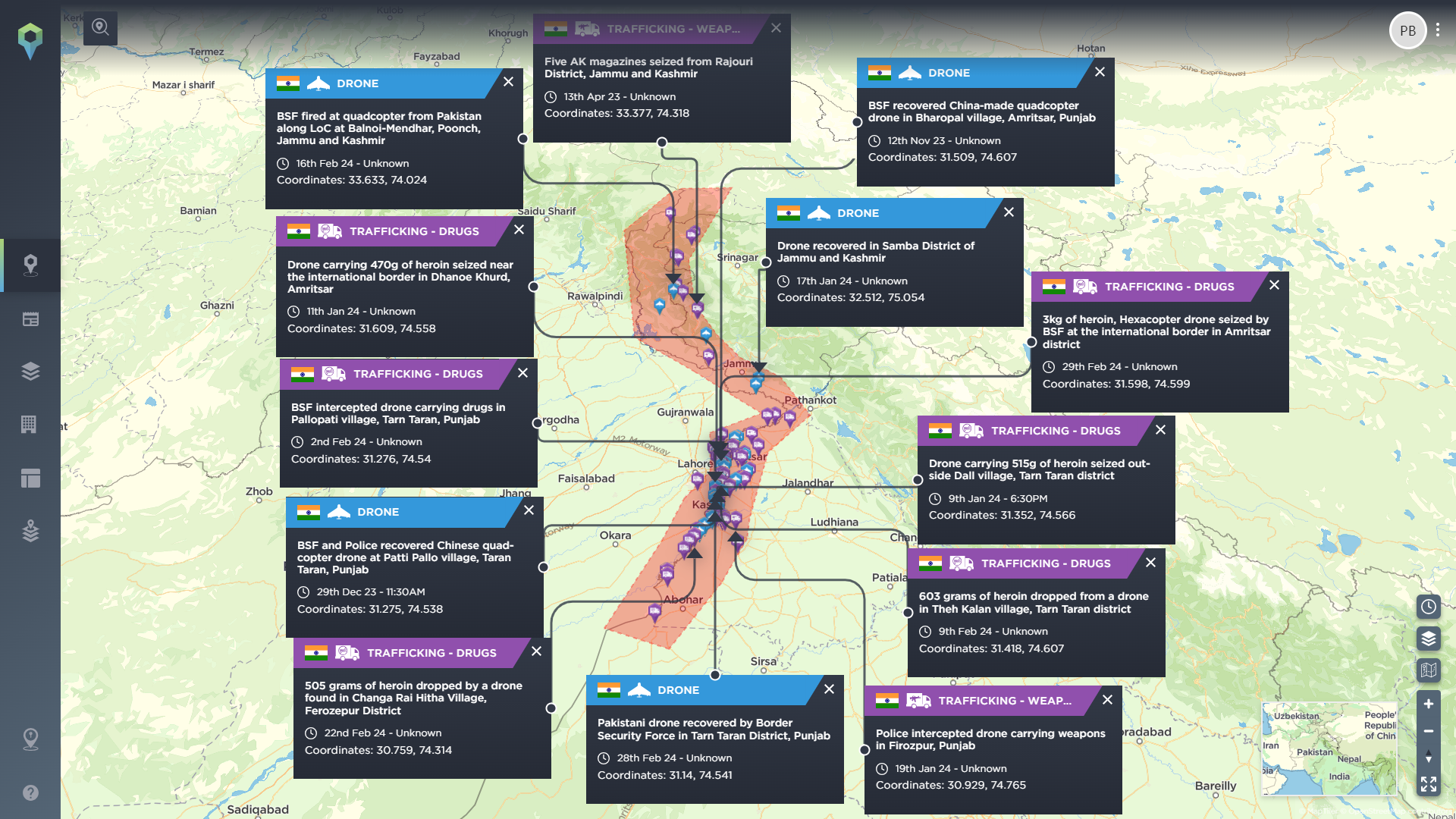
Incidents of drone-involved drug and arms trafficking across the India-Pakistan border since the start of 2023 [image source: Intelligence Fusion]
Analyzing the aerial nexus of drugs and arms trafficking along the India-Pakistan border, the new challenge might require tailored countermeasures for the region. The new aerial threats have induced the need for border-management strategy. The Ministry of Home Affairs in India has reportedly considered actively deploying Anti-Unmanned aerial vehicle (UAV) technologies with laser and jammer capabilities, enhanced night vision and other capabilities that would allow to efficiently deal with these drones. The possible deployment of anti-drone systems like Skywall 100 and the DroneGun tactical CHIMERA (developed using French technology) can be seen. The new fleet of anti-drone systems will probably have the capacity to jam the rogue UAV’s signal to disable its signals up to a range of 400 meters. Setting up a drone forensic lab in Amritsar and getting security agencies to develop mechanisms to counter future threats posed by the drone are likely measures taken by the MHA. The systems will be possibly placed across the western border within a block of six months.
A more enhanced ecosystem to develop anti-drone technology with interagency support will be deployed. The authorities expect that such technologies will further prevent drone infiltration but with more advanced technologies come new challenges to tackle for the forces. The effectiveness of these techniques to counter this threat is a question to be answered in the future.
Intelligence Fusion offers unrivalled levels of granularity and filtering options, helping you track exactly what matters most to your operations. Our dataset of historical and contemporaneous threat intelligence incidents can be broken down into nearly 160 different incident types across 11 different categories, including drug and arms trafficking, and drone activity – as demonstrated above.
Our clients can use our platform to track illicit border activity across the globe, helping them identify developing trends and patterns. If you’d like to discuss how we can work together to help your organisation, and understand the full capabilities of what we do, book some time in with a member of our team here.
References
- https://pib.gov.in/PressReleasePage.aspx?PRID=1911737
- https://carnegieindia.org/2023/07/10/drone-intrusions-along-india-pakistan-international-border-countering-emerging-threat-pub-90149
- https://www.firstpost.com/explainers/pakistans-drones-bring-drugs-weapons-across-border-heres-how-india-is-fighting-back-13549592.html
- https://www.theguardian.com/world/2023/dec/27/wave-of-drug-carrying-drones-flying-into-india-from-pakistan-officials-say#:~:text=BSF%20said%20drones%20were%20responsible,the%20security%20of%20India’s%20border.
- https://www.idsa.in/system/files/OP_DrugTraffickinginIndia.pdf

